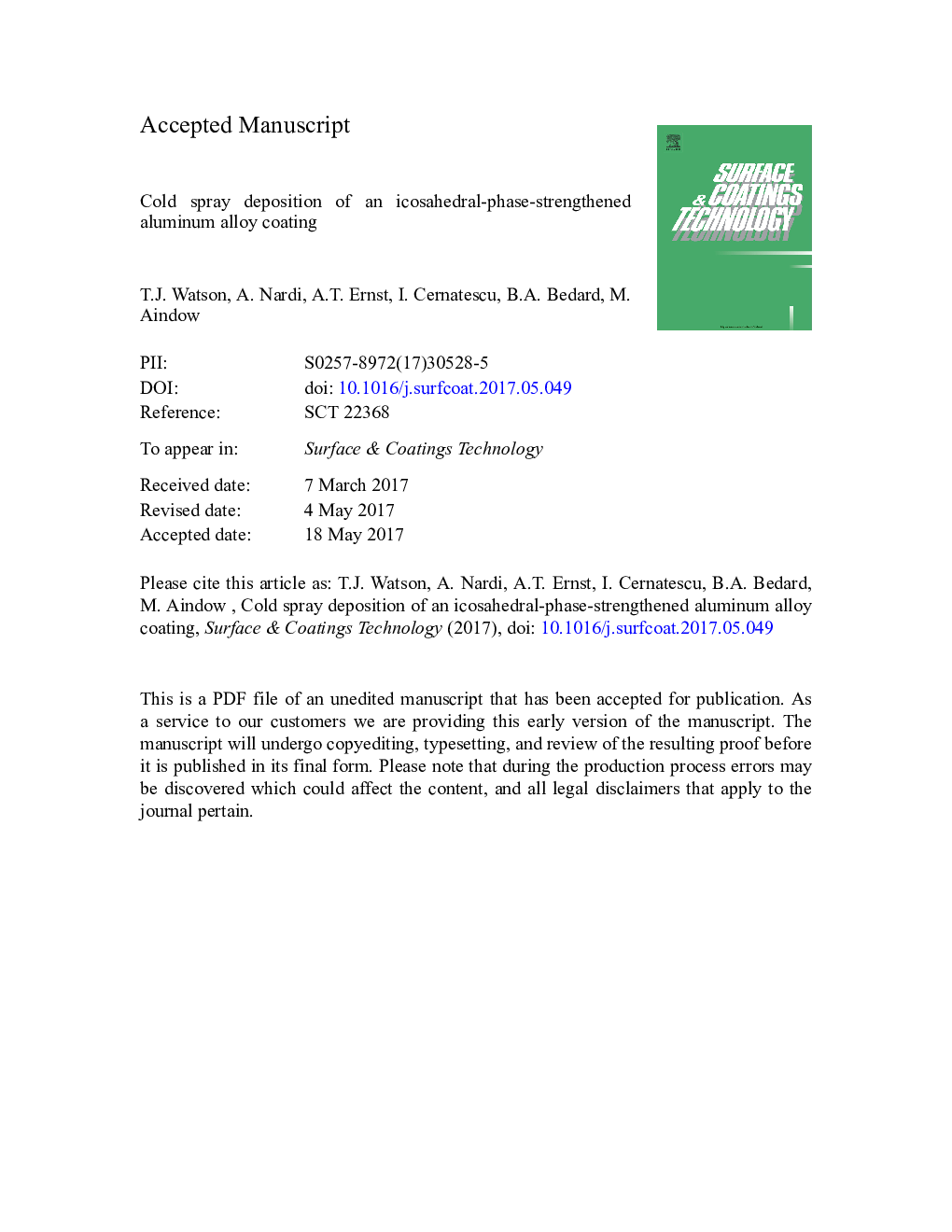| Article ID | Journal | Published Year | Pages | File Type |
|---|---|---|---|---|
| 5465060 | Surface and Coatings Technology | 2017 | 23 Pages |
Abstract
Preliminary cold spray trials have been performed using gas-atomized Al-Cr-Mn-Co-Zr alloy powder, which exhibits a nanocomposite structure with an Al matrix and 35 vol% of icosahedral quasicrystalline dispersoids. Consolidated material produced from this powder has been shown to exhibit a remarkable combination of mechanical properties and pitting corrosion resistance. The purpose of this research was to determine whether this nanocomposite material could form the basis of a hard, corrosion-resistant coating. The powder was screened and classified to a size range of 15-34 μm. Coatings of 180 μm in thickness were deposited using a He carrier gas with a gun temperature and pressure of 430 °C and 3.5 MPa, respectively. The coatings were hard (301 ± 25 HV), dense (< 1% porosity), and adherent (no interfacial cracks or debonds). X-ray diffraction and electron microscopy data show that the nanocomposite powder microstructure is retained in the coating with no decomposition of the metastable quasicrystalline dispersoids to equilibrium crystalline phases. However, there were significant changes in the grain structure of the Al, both in the coating and in the underlying substrate. The grains are refined and equiaxed in the substrate, indicating that dynamic recovery/recrystallization occurs. Severely distorted flattened Al grains arise in the coating close (< 1 μm) to the interface with the substrate, consistent with bonding via an adiabatic shear instability. The coating shows no pitting in 6-week salt fog exposures and seems to afford some protection to small exposed areas on adjacent bare substrate. These observations suggest that this material has very good potential to form the basis for a practical, hard, corrosion-resistant, quasicrystal-reinforced, nano-composite, cold-spray coating.
Related Topics
Physical Sciences and Engineering
Materials Science
Nanotechnology
Authors
T.J. Watson, A. Nardi, A.T. Ernst, I. Cernatescu, B.A. Bedard, M. Aindow,
